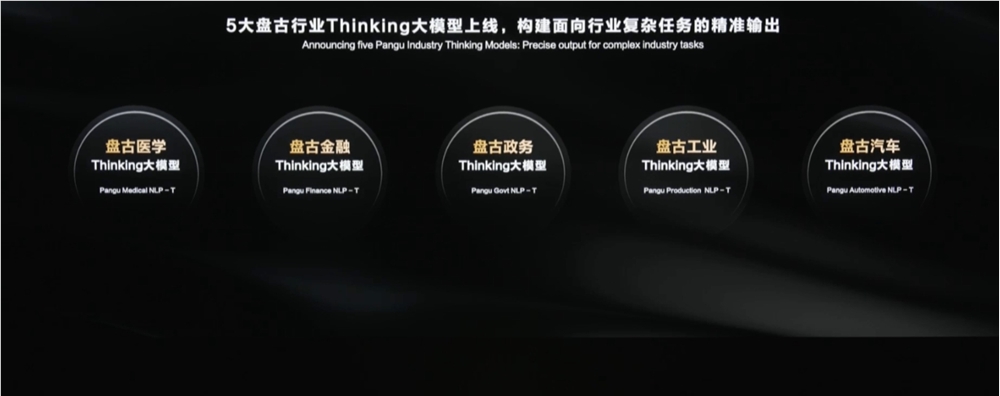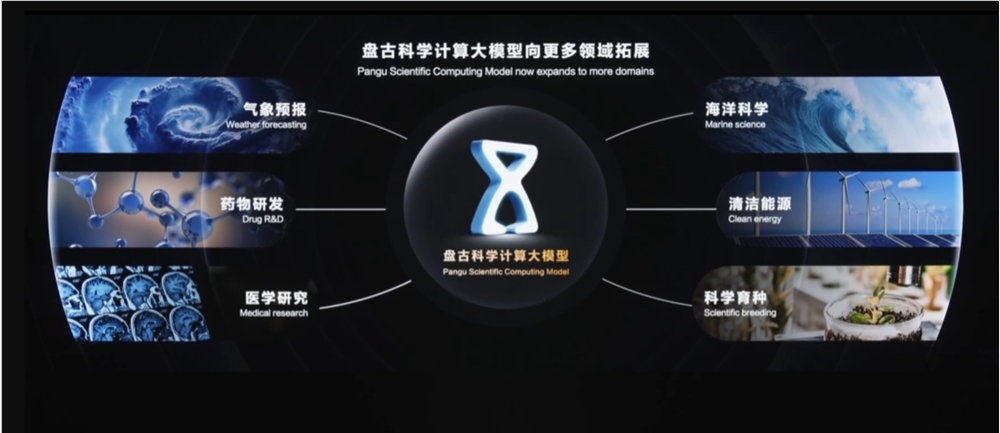During the theme speech of Huawei Developer Conference HDC2025 held this afternoon, Zhang Ping'an, a standing director of Huawei and CEO of Huawei Cloud Computing, officially announced the release of PanGu 5.5, marking a comprehensive upgrade for five fundamental models in natural language processing (NLP), computer vision (CV), multimodal, prediction, and scientific computing.

In the field of PanGu NLP, the brand-new 718B deep thinking model, as an MoE model composed of 256 experts, has significantly improved its capabilities in knowledge reasoning, tool calling, mathematics, and other fields, leading the industry. The PanGu model is trained on the full-stack hardware and software of Ascend Cloud, demonstrating the ability to build world-class large models with the Ascend architecture. Additionally, PanGu 5.5 has been upgraded in features such as efficient long sequences, low hallucination, fast and slow thinking fusion, and Agent. Through the self-adaptive fast and slow thinking integration technology, the model can automatically switch thinking modes based on the difficulty of the question, improving overall reasoning efficiency by eight times. PanGu DeepDiver, leveraging technologies like long chain problem synthesis and progressive reward, demonstrates high-efficiency execution capabilities in web search and common sense answering applications, such as completing complex answers involving more than ten jumps within five minutes and generating professional research reports over ten thousand words, significantly enhancing work efficiency.

In the field of PanGu prediction models, the industry-first triplet transformer unified pre-training architecture is used to uniformly encode and process data from different industries, greatly improving prediction accuracy and generalization across industries and scenarios.
In the field of PanGu scientific computing models, Huawei Cloud continues to deepen its integration with scientific application areas. Shenzhen Meteorological Bureau upgraded the "Zhi Ji" model based on PanGu, achieving AI ensemble forecasting that more intuitively reflects the likelihood of weather system evolution, reducing forecast errors. Chongqing Meteorological Bureau developed the "Tian Zi · 12h" meteorological model for precipitation characteristics in the Chengdu-Chongqing region, enhancing disaster weather intraday forecast and warning capabilities. Shenzhen Energy uses PanGu for short- and medium-term wind, solar, and hydroelectric power generation forecasts, reducing power curtailment and improving energy development efficiency.
In the field of PanGu computer vision (CV) models, Huawei Cloud released a new MoE architecture-based visual model with 30 billion parameters, which is currently the largest visual model in the industry, fully supporting multi-dimensional, pan-visual perception, analysis, and decision-making. Meanwhile, the PanGu CV model builds a rare pan-visual fault sample library in industrial scenarios through cross-dimensional generative models, greatly increasing the types and precision of identifiable business scenarios.
In the field of PanGu multimodal models, a world model based on the PanGu multimodal model was newly released, constructing a digital-physical space for training intelligent driving and embodied intelligent robots to achieve continuous optimization and iteration. In the field of intelligent driving, the PanGu world model can generate a large amount of training data without relying on costly road sampling, providing strong support for the development of intelligent driving.
Additionally, after the release of Huawei Cloud PanGu 5.5, it further expands application scenarios and launched five industry-specific natural language processing models with deep thinking capabilities. These five models are PanGu Medical Thinking, PanGu Financial Thinking, PanGu Government Affairs Thinking, PanGu Industrial Thinking, and PanGu Automotive Thinking, aiming to provide more specialized and intelligent natural language processing solutions for different industries. It is reported that these five models will be officially launched soon, bringing more efficient and accurate natural language processing experiences to various industries.
